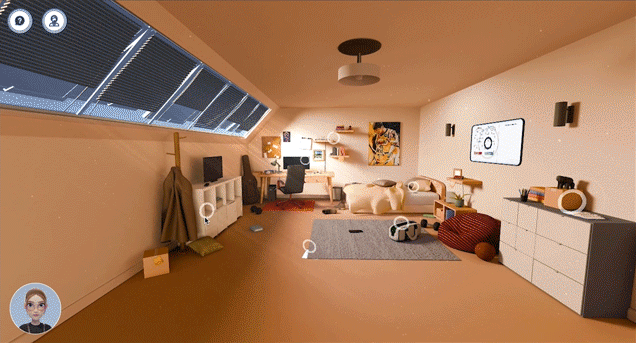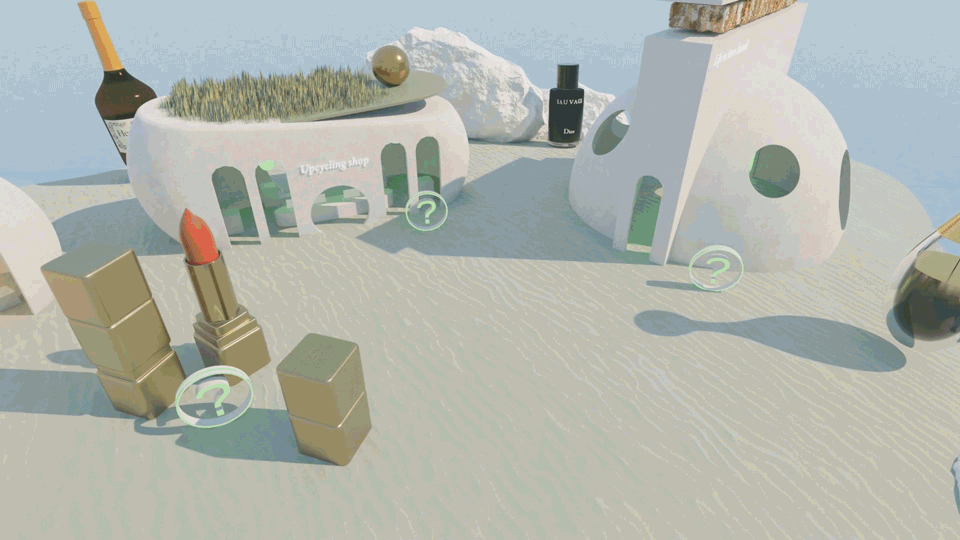
Three.js and WebGL: the winning combination for a successful digital experience

Three.js technology is a javascript library providing access to a wide range of 3D assets. It offers a complete range of tools for the creation of 3D objects and interactive scenes, enabling developers to design immersive online experiences.
This technology grows in popularity every year, thanks to its accessibility and cross-platform compatibility, easy-to-use interface, committed community and comprehensive documentation.
Find out some key advantages of WebGL with Three.js below!
1. Enhanced performance
Three.js enables the developers to create, develop and explore 3D worlds easily. 3D is an increasingly sought-after criterion due to their enhanced immersiveness compared to 2D, for game designs and interactive experiences.
Three.js is the most popular WebGL library, offering unparalleled speed and performance without any additional plug-ins, while far surpassing that of HTML.
The combination of Three.js and WebGL enhances the design experience. Developers can create three-dimensional graphics directly from the browser with WebGL, providing a direct view of the graphics. As for Three.js, thanks to its integrated features such as camera control and special effects, it saves a considerable amount of time and facilitates 3D integration and asset optimization, allowing the developers to concentrate on creating rather than implementing each feature from scratch.
2. Rich & light experiences
Accessibility and lightness are crucial aspects in the development of digital tools such as games and applications, particularly in the field of training. For training, it’s important that they are accessible from anywhere, at any time from all devices.
Three.js offers an effective solution for optimizing 3D rendering, using techniques such as render batching, texture compression and reduced number of sorts, to minimize the rendering load and significantly reduce the size of games.
Thanks to these optimizations, it is possible to compress elements efficiently while preserving superior rendering quality, which leads to reducing the bandwidth required to load games. In addition, Three.js paired with a responsive design approach enables the interface to adapt ergonomically to different devices, guaranteeing a seamless, responsive experience on a variety of platforms.

3. Flexibility and versatility
Three.js is an extremely versatile tool. From scratch, it’s possible to materialize any element without limits. Whether it’s a simple 3D element to be materialized, an interactive map or the development of a complex environment, the use of Three.js opens up an infinite range of possibilities and adapts to all types of projects (interactive map, arcade games, mobile learning).
What’s more, it’s a flexible tool for materializing 3D assets directly on a web server. Coupled with WebGL, they can be easily exported and integrated into any type of web technologies, saving considerable time when developing interactive experiences. The flexibility of Three.js allows the developers to import 3D models and elements created elsewhere and integrate them into any desired projects. It supports various file formats, such as OBJ, FBX, STL, GLTF, and more. These models can be hosted on any server accessible via the internet.
Interested in immersive experiences? Discover their benefits!
4. Fluid web integration
Three.js and WebGL are two distinct tools, but they complement each other to unleash their full potential. These technologies enable smooth, seamless web integration. WebGL is a well-established standard for 3D graphics on the web, offering native support in many browsers. It’s worth remembering that these technologies offer cross-platform and cross-device compatibility, ensuring the games are accessible at any time from anywhere.
The combination of Three.js and WebGL strikes the perfect balance between simplicity, flexibility and lightness, making it the technology of choice for game and web development.
Three.js, a JavaScript library that leverages WebGL to create and display 3D graphics in a web browser, can be highly effective for corporate training in several innovative ways. Check out the video below how a creative gamification agency in Paris, Emeraude Escape utilises this technology for the development of creative learning solutions.
WebGL with Three.js is a versatile technology that is a must-have and that can be integrated into a wide range of projects and applications, allowing various industries to create engaging and interactive 3D experiences on the web.
In conclusion, while WebGL and Three.js offer powerful tools for creating immersive 3D experiences on the web, some minor challenges may arise. Performance can vary on older devices. It requires a significant amount of time to master due to its learning curve. Compatibility issues can occur across different browsers. Developing complex 3D scenes can be time-consuming and painstakingly difficult for optimal results. Lastly, accessibility may be limited, reducing audience reach, particularly for older devices and assistive technologies.
Nevertheless, these technologies will achieve its optimal result with a strong community working on together without a doubt!
Contact Emeraude Escape if you’re interested in creating digital experiences developed on three.js and WebGL.
Discover


Book A Demo
Get a personalized demonstration by one of our game design experts.




